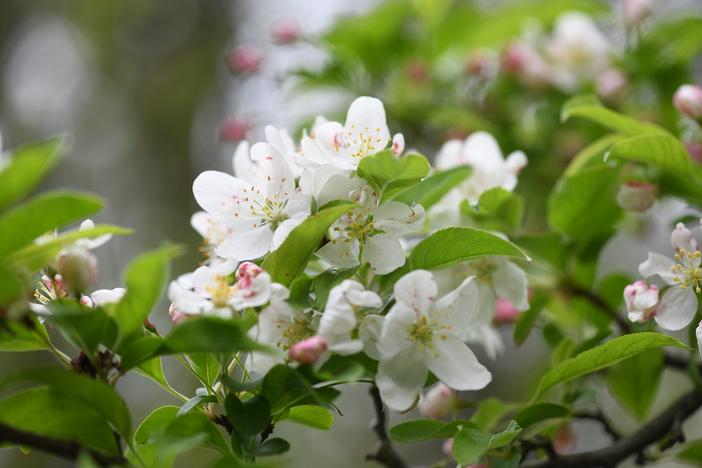Prairie Crabapple
(Malus ioensis)
Prairie Crabapple (Malus ioensis)
/
/

Delaware Master Gardeners
CC BY 2.0
































Estimated Native Range
Summary
The Prairie Crabapple is valued for its spring floral display and its ability to attract pollinators and birds. It is used in native plant gardens, as a specimen plant, or in naturalized areas. This species is adaptable to a range of soil types, from clay to loam, and prefers good drainage. While it thrives in full sun, it can tolerate part shade. Gardeners should be aware that this tree can be susceptible to common apple diseases such as apple scab and cedar-apple rust. It may also sucker from the base, which requires maintenance to keep a tidy form.CC BY-SA 4.0
Plant Description
- Plant Type: Tree, Shrub
- Height: 10-20 feet
- Width: 5-10 feet
- Growth Rate: Moderate
- Flower Color: Pink, White
- Flowering Season: Spring
- Leaf Retention: Deciduous
Growth Requirements
- Sun: Full Sun
- Water: Medium
- Drainage: Fast, Medium, Slow
Common Uses
Bee Garden, Bird Garden, Butterfly Garden, Edible*Disclaimer: Easyscape's listed plant edibility is for informational use. Always verify the safety and proper identification of any plant before consumption., Fragrant, Hummingbird Garden, Low Maintenance, Potted Plant, Showy Flowers
Natural Habitat
Tallgrass prairies, savannas, and open woodlands
Other Names
Common Names: Iowa Crab Apple, Prärie-Apfel, Prairie Crabapple
Scientific Names: , Malus ioensis, Pyrus ioensis, Malus ioensis var. ioensis, Malus ioensis var. palmeri, Malus ioensis f. plena, Malus ioensis var. creniserrata, Malus ioensis var. bushii, Malus coronaria var. ioensis, Pyrus ioensis var. palmeri
GBIF Accepted Name: Malus ioensis (Alph.Wood) Britton